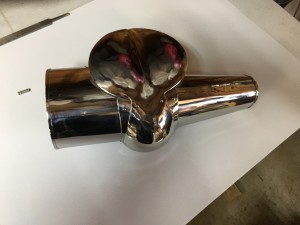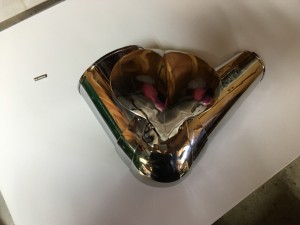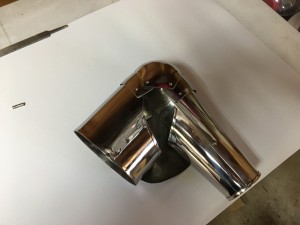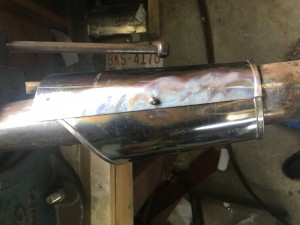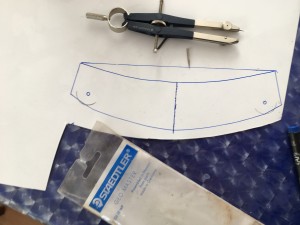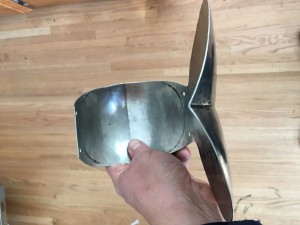Back in the dawn of time when I used to build armour to sell in the Society for Creative Anachronisms (SCA) I never understood why people were unwilling to pay for nice armour. I had a running joke with a fellow armourer – “If you have a $75 head, then you should buy a $75 helmet”. Yup that was a long time ago.
I’ve spent a lot of years working away at getting better at the craft, and like to think that I’m starting to get reasonably good. Mac, Wade, Patrick, Peter and Ugo all serve to remind me that I have a long way to go, and I have (fortunately) outgrown the “arrogant asshole” stage that mst armourers seem to go through when they think that they can make anything because they know enough to mostly make the shapes they want, but they aren’t yet good enough to see the shapes that they need to make.
I just finished up a prototype pair of arm harnesses (in stainless steel) which I will now build in an appropriate thickness of carbon steel. After taking the “beauty shot” of the completed project, I looked around at all of the things that I had moved off my project area (the deep freeze in my garage) and thought that I should include a picture of all the pieces that weren’t in that shot, but were needed to complete it (I realized later that I also left out the pair of hinges that I didn’t use). Here is the comparison:

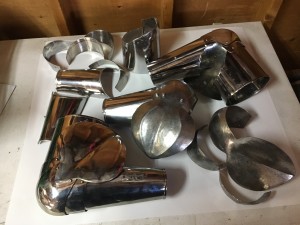
Continue reading The Hidden Cost of Armour

